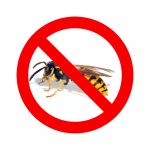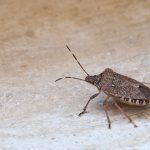Preventing Carpenter Ants: Northeast Ohio’s most Destructive Pest
Carpenter Ants are one of Northeast Ohio’s most destructive pests. These small creatures are responsible for millions of dollars in damage every year, but with a few simple precautions, your house doesn’t have to be part of that statistic.
Identifying Carpenter Ants
In Ohio, the black carpenter ant, *Camponotus pennsylvanicus*, is the most common species. This ant is black, with very fine whitish or yellowish hairs on the abdomen. Minor workers of the black carpenter ant generally are about ¼ inch long and major workers are approximately ½ inch.
Carpenter ants create their nests in soft, damp wood, or wood that’s been damaged by fungus. They do not nest in mounds in open fields. This is the *formica* or field ant. These are common in Ohio and easily confused with carpenter ants since they are also large and black.
Why are Carpenter so Destructive?
Carpenter ants like to nest in soft, damp wood which makes Cleveland’s aging housing stock particularly vulnerable. Unfortunately, once established, the colony will move to undamaged adjacent wood to increase the colony’s size. While they do no eat the wood, as termites do, they tunnel through it creating small channels that weaken the wood, compromising the structure. Carpenter ants can be difficult to detect because the colony can take years before it begins satellite colonies. By this time the nest can have 2000-4000 individuals.
Detecting Carpenter Ants
These large black ants are usually discovered by the sawdust-like shavings they leave behind. Carpenter ants don’t eat the wood. They tunnel through it, and those shavings must go somewhere. Inspect baseboards, toe kicks, and basement rim joists for unexplained sawdust. If you spot sawdust near a hole anywhere around your house, it’s a good indication there are carpenter ants. If you see sawdust around the base of a tree around your property, have it treated as well since carpenter ants can quickly spread into your house. Buying a home? Consider having a pest inspection so you are not buying someone else’s pest problem.
Carpenter ants are most active at night, making this a good time to look for signs of activity. Leaky plumbing, kitchen sinks and any sources of water or food are good places to check. Carpenter ants also make noise as they chew through wood. This noise is described as cellophane crinkling. If you hear this coming from your walls at night, it’s a good chance there could be carpenter ant activity inside.
Preventing Infestations
Keep your house maintained. Carpenter ants prefer old, damp wood, so making sure your home is free from leaks and repairing any rotting wood immediately will help discourage a colony from establishing.
Avoid placing mulch against the foundation of your house. Leave a barrier of stone at least 9 inches to prevent insects from entering.
Seal any cracks in your foundation and around basement windows.
Stack firewood away from structures, and keep it dry with a tarp to prevent ants from nesting.
Eliminate any sources of water in and around your home as carpenter ants will need it to survive.
Trim back branches and shrubbery from contact with your home.
Keep tall grasses and weeds trimmed.
Remove debris and rotting logs from your property.
Inspect any trees on your property for damage and treat any that have signs of carpenter ant infestation.
Carpenter ants don’t have to become a destructive force on your property. With these simple precautions, you can minimize your risk, potentially saving yourself from thousands of dollars in costs down the road.
If you find signs of carpenter ant activity, don’t wait. Call us today. (440)528-1234







Recent Comments